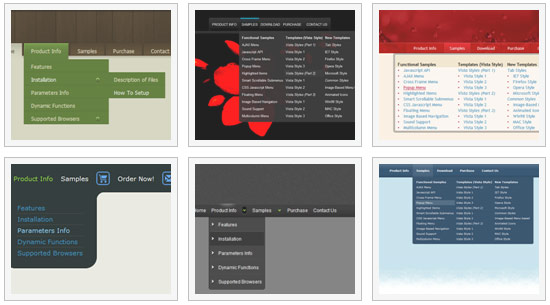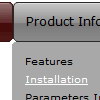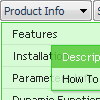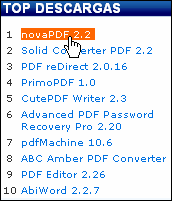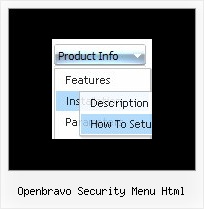Recent Questions
Q: How do I make buttons in the navigation bar example transparent?
A: To set transparent background for the menu you should set:
var menuBackColor="transparent";
Q: How do I create more space between the menu items?
I have tried adding to the Item Appearance, itemSpacing and itemPadding.
A: You can paste the separator.
Please, see the following parameters:
//------- Separators -------
var separatorWidth = "10";
var separatorHeight = "20";
var separatorAlignment = "center";
var separatorImage = "C";
var separatorVWidth = "150";
var separatorVHeight = "10%";
var separatorVImage = "image.jpg";
You can create separators using menuItems, for example:
var menuItems = [
["item 1"],
["-"], // this item is separator
["item 2"],
];
You can also use this parameter:
var itemPadding = "4px";
You can also set multiple values, for example:
var itemPadding = "2px 15px 5px 5px";
(top, right, bottom, left)
Q: I got it to work ... but I can't make the javascript menu bars locate where I want it on the page.
A: Check that you use relative position for the menu
var absolutePos=0;
var posX="0px";
var posY="0px";
You can install the menu in DIV or Table, for example:
<div align=center>
<script type="text/javascript" src="deluxe-menu/data.js"></script>
</div>
You can send us a copy of your html page (including .js files) ora direct link to your website, so we can check it.
Q: We haven't managed to find out how to activate a popup window through click in a flash? Is there possible to call a single jsfunction to activate it?
A: You can deluxePopupWindow.open() function to open your window:
<a href="javascript:;" onclick="deluxePopupWindow.open('window1', 'Content1 Content1','Window1','width=220,height=100,resizable,scrollbars=no,middle,right,fade-effect', 'windowsvista_graphite')">
<OBJECT classid="clsid:D27CDB6E-AE6D-11cf-96B8-444553540000" codebase="http://download.macromedia.com/pub/shockwave/cabs/flash/swflash.cab#version=6,0,0,0" WIDTH="120" HEIGHT="40">
<PARAM NAME=movie VALUE="deluxe-menu.files/flash-deluxe-menu.swf">
<PARAM NAME=quality VALUE=best>
<param name="wmode" value="opaque">
<PARAM NAME=bgcolor VALUE=#FFFFFF>
<EMBED src="deluxe-menu.files/flash-deluxe-menu.swf" quality=best bgcolor=#FFFFFF wmode="opaque" WIDTH="120" HEIGHT="40" NAME="data-samples/flash-deluxe-menu" TYPE="application/x-shockwave-flash" PLUGINSPAGE="http://www.macromedia.com/go/getflashplayer">
</EMBED>
</OBJECT></a>
